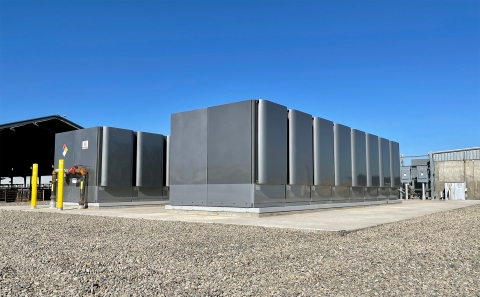
Renewable Power from Dairy Farm Waste
Bloom Energy announced a one megawatt (MW) fuel cell deployment at Bar 20 Dairy Farms in Kerman, California to efficiently produce on-site, renewable electricity from dairy cow manure. The installation marks Bloom’s first dairy farm biogas project.
To turn cow waste into renewable electricity, Bar 20 Dairy Farms combined a methane digester, gas clean-up skid, and Bloom Energy fuel cells for an end-to-end, waste-to-electricity solution. The California Bioenergy (CalBio) digesters capture biogas, primarily consisting of methane, released from the anaerobic decomposition of dairy manure. After being cleaned in a separation skid, the biogas is then converted to renewable electricity through an electrochemical process, without combustion through Bloom Energy’s fuel flexible, solid oxide fuel cells.
Dairy biogas contains up to 65 percent methane. The waste-to-electricity solution captures methane that would otherwise be released into the atmosphere, while reducing carbon emissions in electricity generation and vehicle fuel. Bloom’s Energy Servers generate enough electricity to operate the gas clean-up skid and to meet the energy needs of the dairy farm. Excess power is deployed to electric vehicle (EV) charging stations across California. Dairy farms, like Bar 20 Dairy Farms, which provide renewable electricity to charge EVs in California, are able to participate in the California Air Resources Board’s Low Carbon Fuel Standard (LCFS) program, providing a new income opportunity for farmers.
Information Source: Read More
Oil and gas, press , | Energy, Climate, Renewable, Wind, Biomass, Sustainability, Oil Price, LPG, Solar

